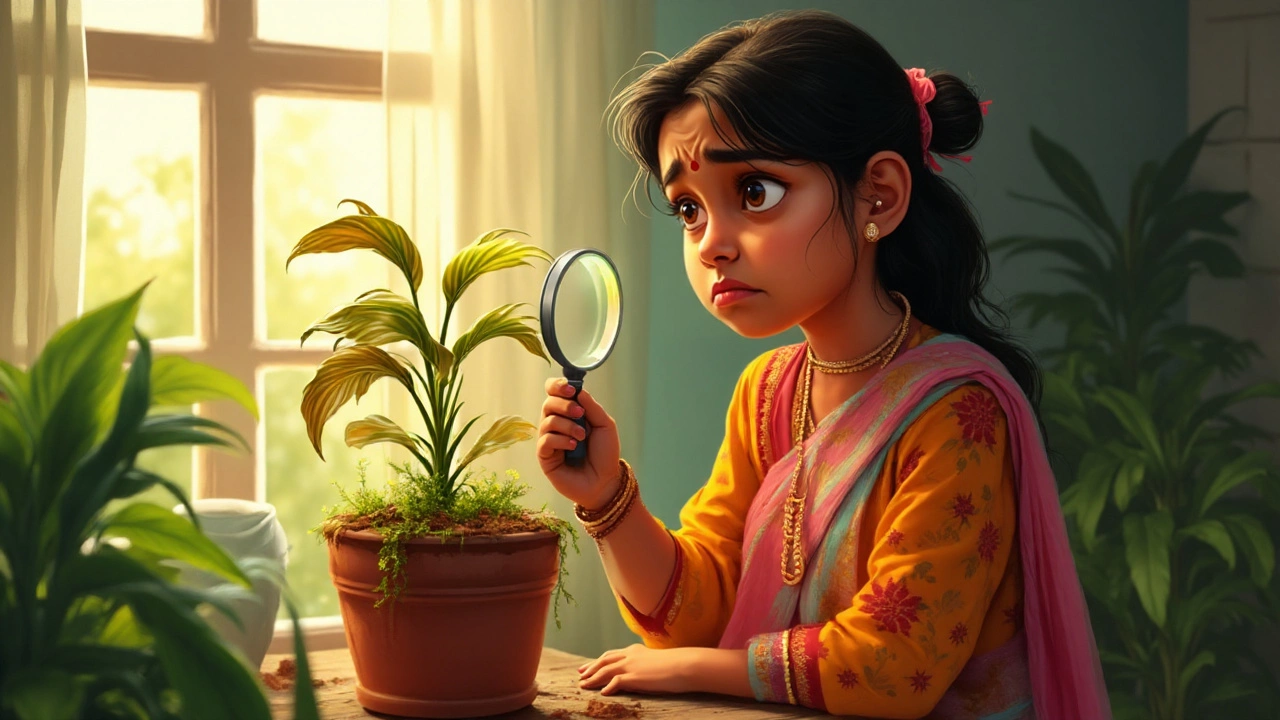Struggling with a wilting or browning plant? Learn how to identify problems, revive dying houseplants, and keep your greenery thriving.
Revive Dying Houseplant: Simple Fixes to Bring Your Indoor Greens Back to Life
When your revive dying houseplant, the process of restoring health to an indoor plant showing signs of decline like yellowing leaves, drooping stems, or root decay. Also known as houseplant recovery, it isn’t about luck—it’s about reading the signals your plant is giving you. Most people think their plant is dead because the leaves turned brown, but the truth? The roots might still be alive, and the soil might just be too wet. You don’t need fancy tools or expensive products. You need to stop watering on a schedule and start watching for signs of stress.
One of the biggest mistakes is assuming all houseplants need the same care. A snake plant survives weeks without water, while a peace lily wilts if the soil dries out even a little. The overwatered houseplant, a common condition where excess moisture suffocates roots and triggers fungal decay is the #1 killer of indoor plants. You’ll see yellow leaves, mushy stems, and sometimes a foul smell from the pot. But here’s the fix: stop watering. Take the plant out, check the roots, trim the rot, and let the soil dry completely before you even think about watering again. You don’t need to repot it right away—just give it space to breathe.
Then there’s the root rot fix, a targeted recovery method involving drainage improvement, soil replacement, and careful moisture management. This isn’t a one-step trick. It’s about understanding that your plant’s roots need air as much as water. Adding perlite or coarse sand to the soil helps. Using pots with drainage holes—not decorative ones without them—is non-negotiable. And don’t let your plant sit in a saucer full of water. That’s like forcing it to stand in a puddle. If you’ve been doing that, it’s no wonder your plant is struggling.
Light matters too. A plant that’s been moved from a bright window to a dark corner will slowly fade. But if you suddenly throw it into direct sun after months in low light, it’ll burn. The trick is gradual adjustment. Check your plant’s natural habitat—does it come from a jungle floor? Then it likes indirect light. Is it a desert succulent? Then it needs strong, direct sun. Don’t guess. Look it up. Most houseplants come with care labels, or you can search the name + "light needs".
You also don’t need to fertilize a sick plant. Fertilizer is food for healthy plants. Giving it to a stressed one is like forcing someone who’s sick to eat a big meal. They can’t process it. Wait until you see new growth—green leaves, new stems—before you add anything to the soil. Until then, focus on water, air, and light.
And don’t forget pests. Spider mites, mealybugs, fungus gnats—they don’t show up out of nowhere. They thrive in dry, dusty, or overly wet conditions. Wipe leaves with a damp cloth. Spray with diluted neem oil if you see tiny bugs. It’s not magic, but it works if you catch it early.
Every plant that looks dead still has a chance—if you act fast and stop treating them like decorations. The indoor plant care, the daily and weekly practices that support healthy growth of plants kept inside homes and offices isn’t about perfection. It’s about paying attention. You’ll know when your plant is happy because it’ll start growing again. New leaves. Stronger stems. A quiet kind of resilience.
Below, you’ll find real fixes from people who’ve been there—their step-by-step saves, the mistakes they made, and what actually worked. No fluff. No theory. Just what to do when your plant is on its last breath.
